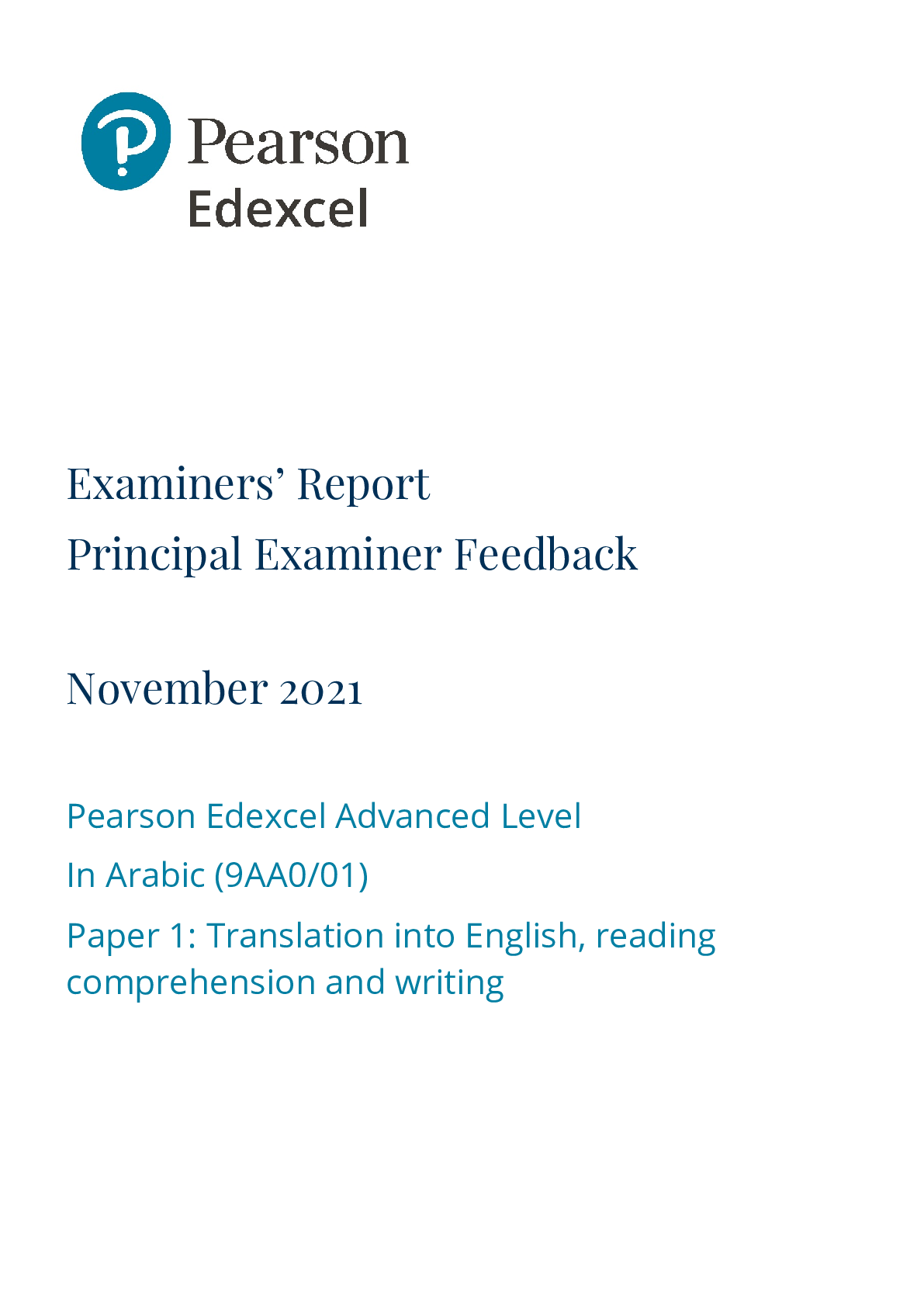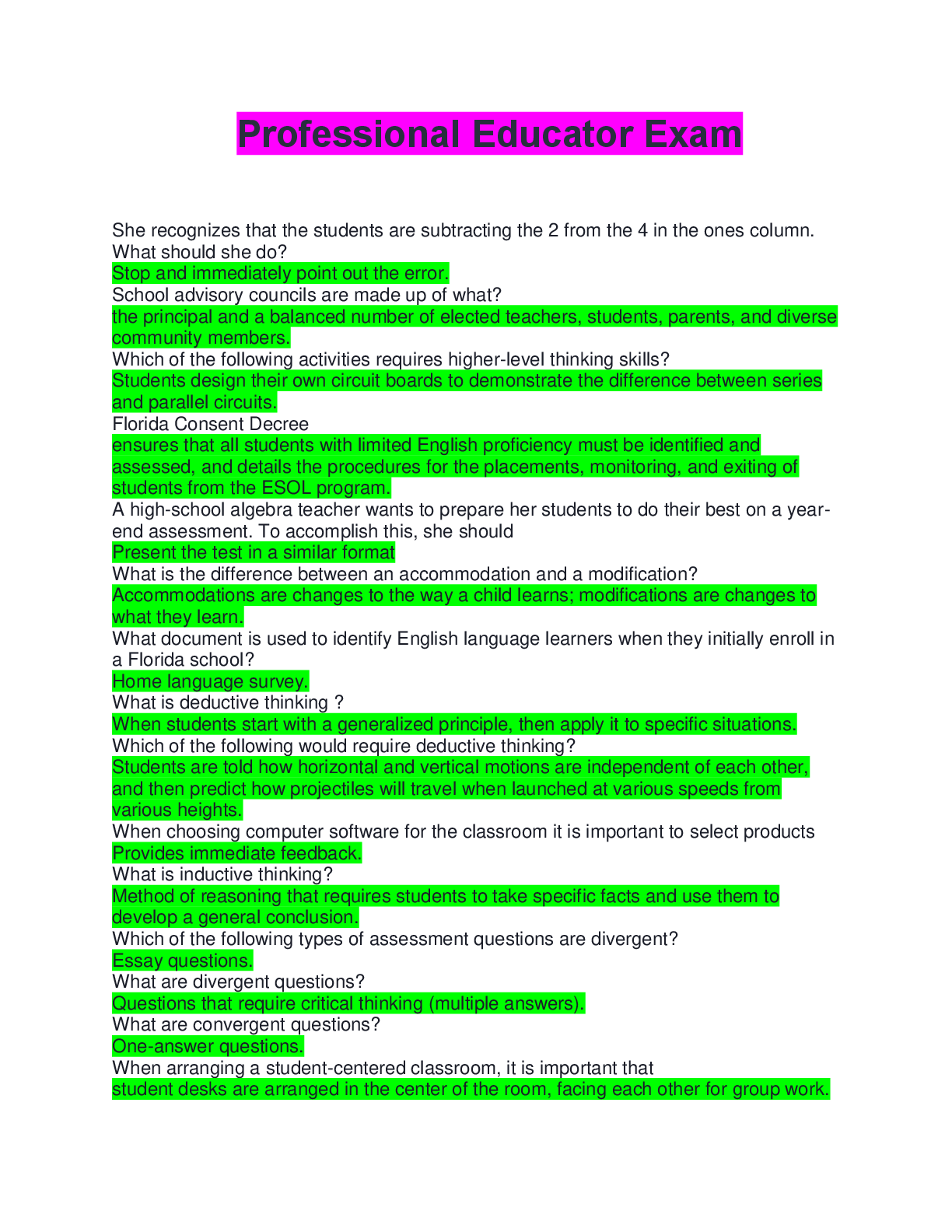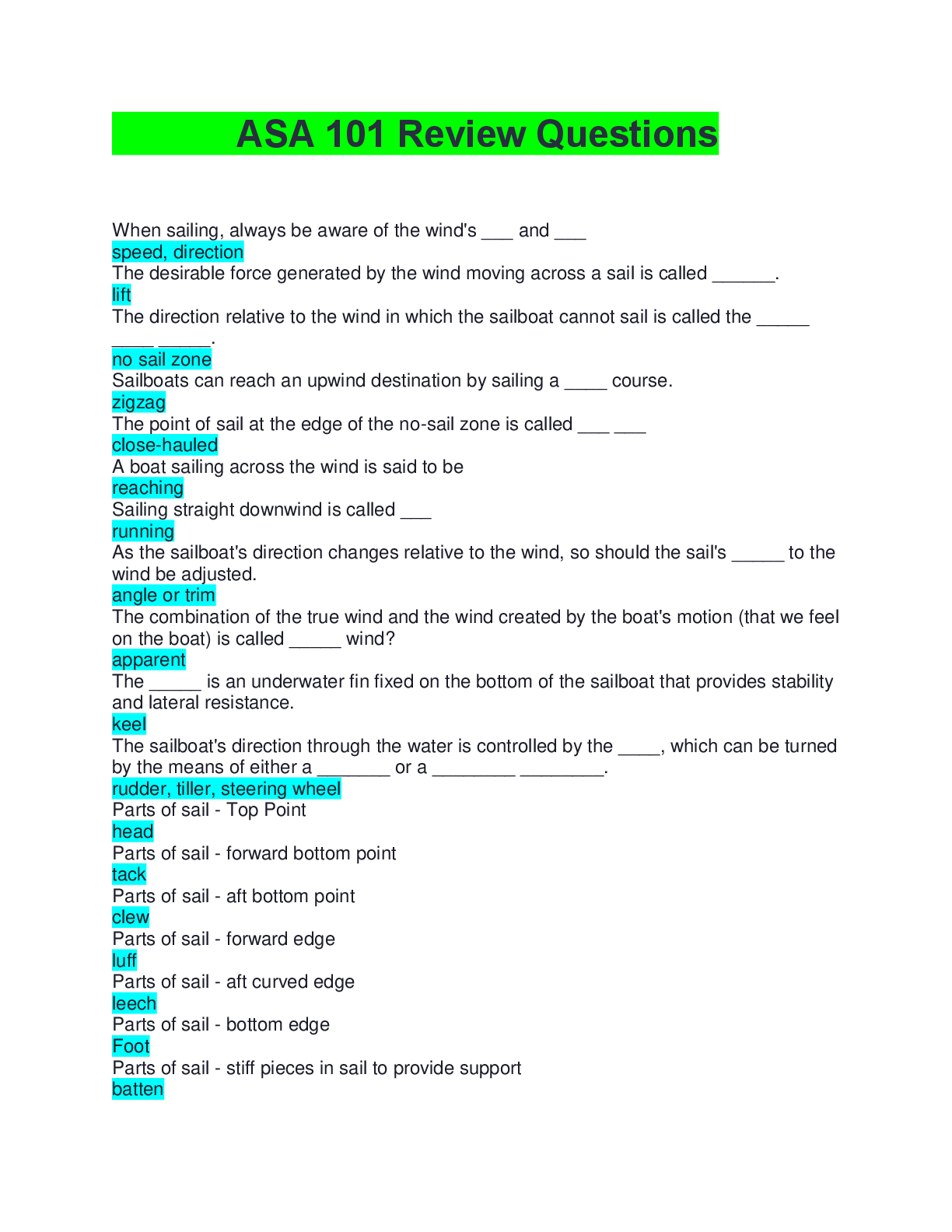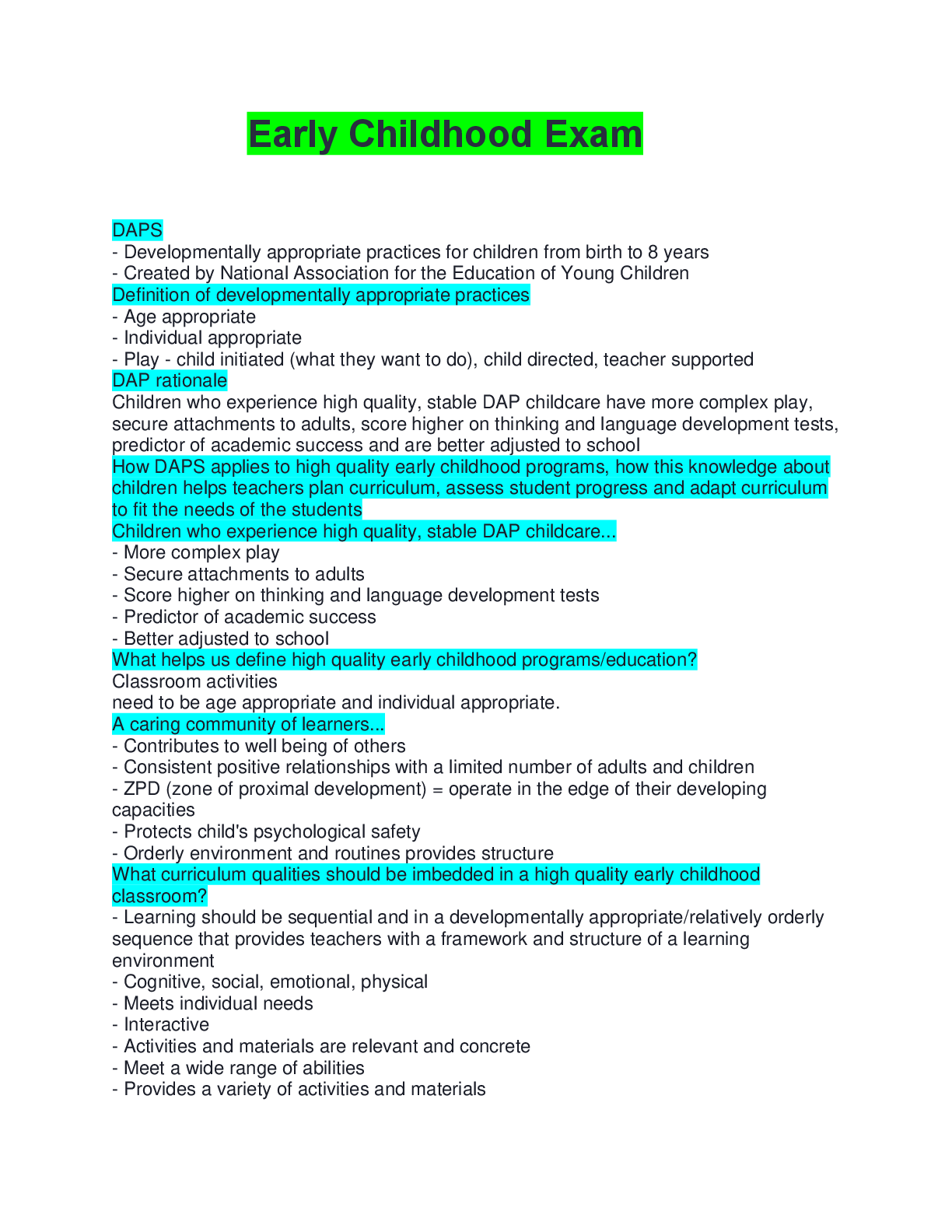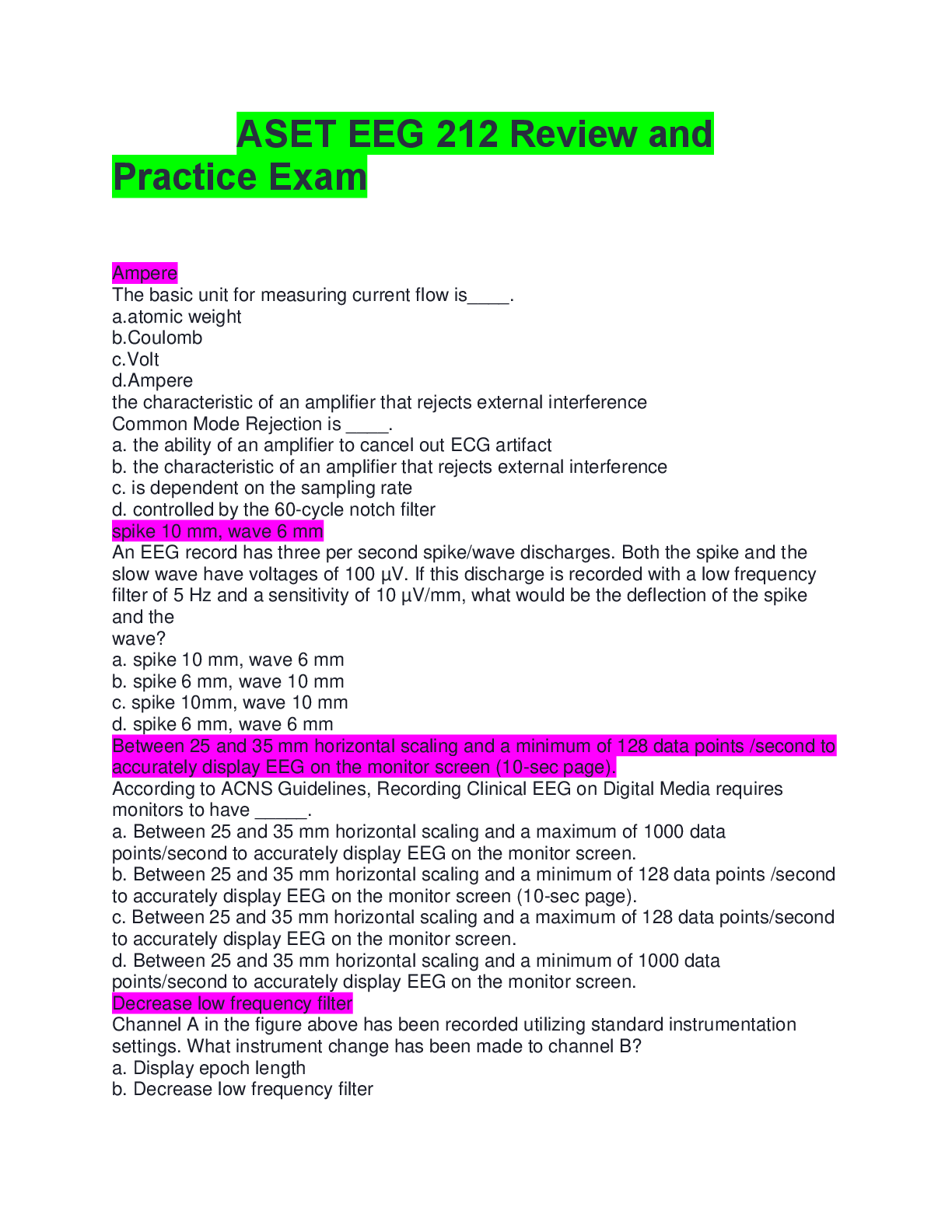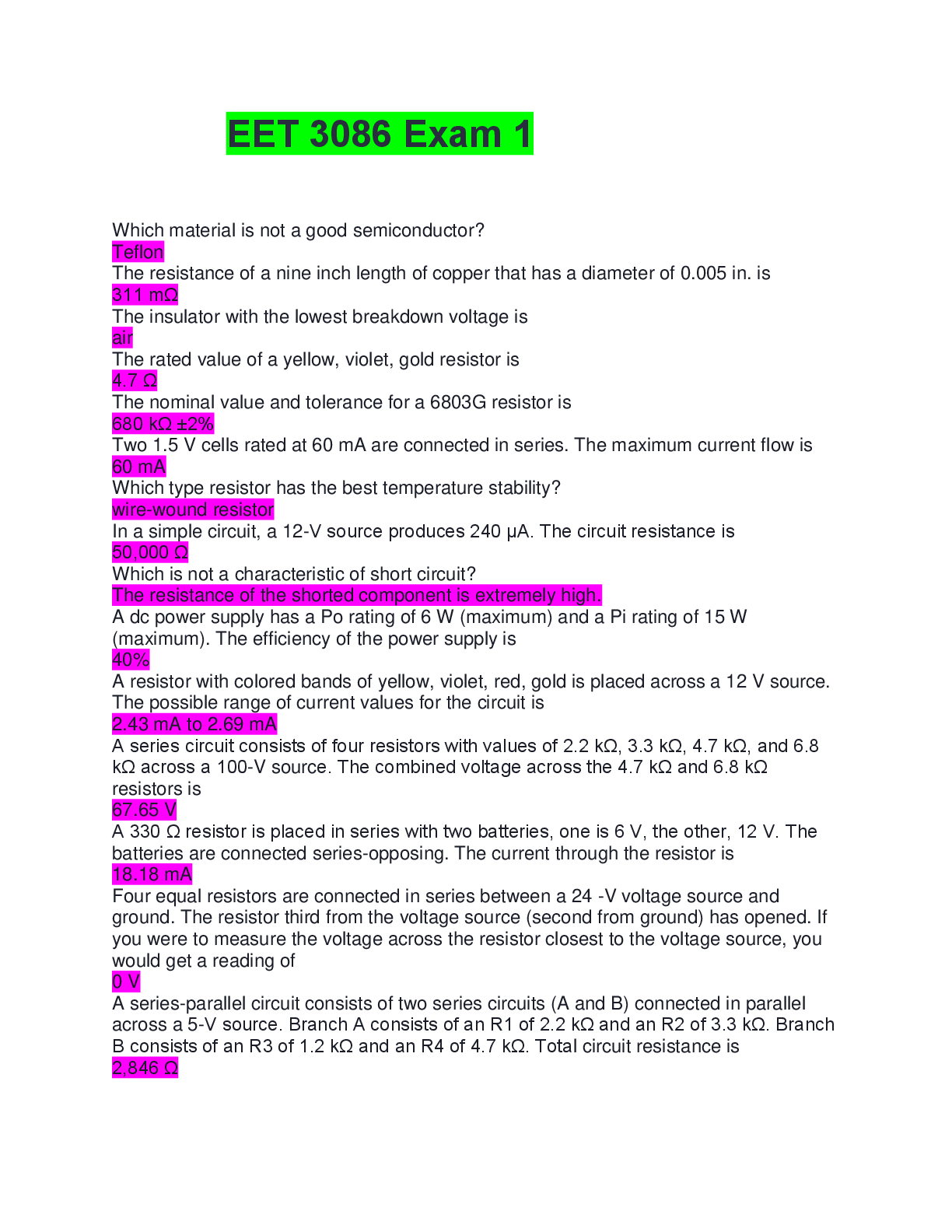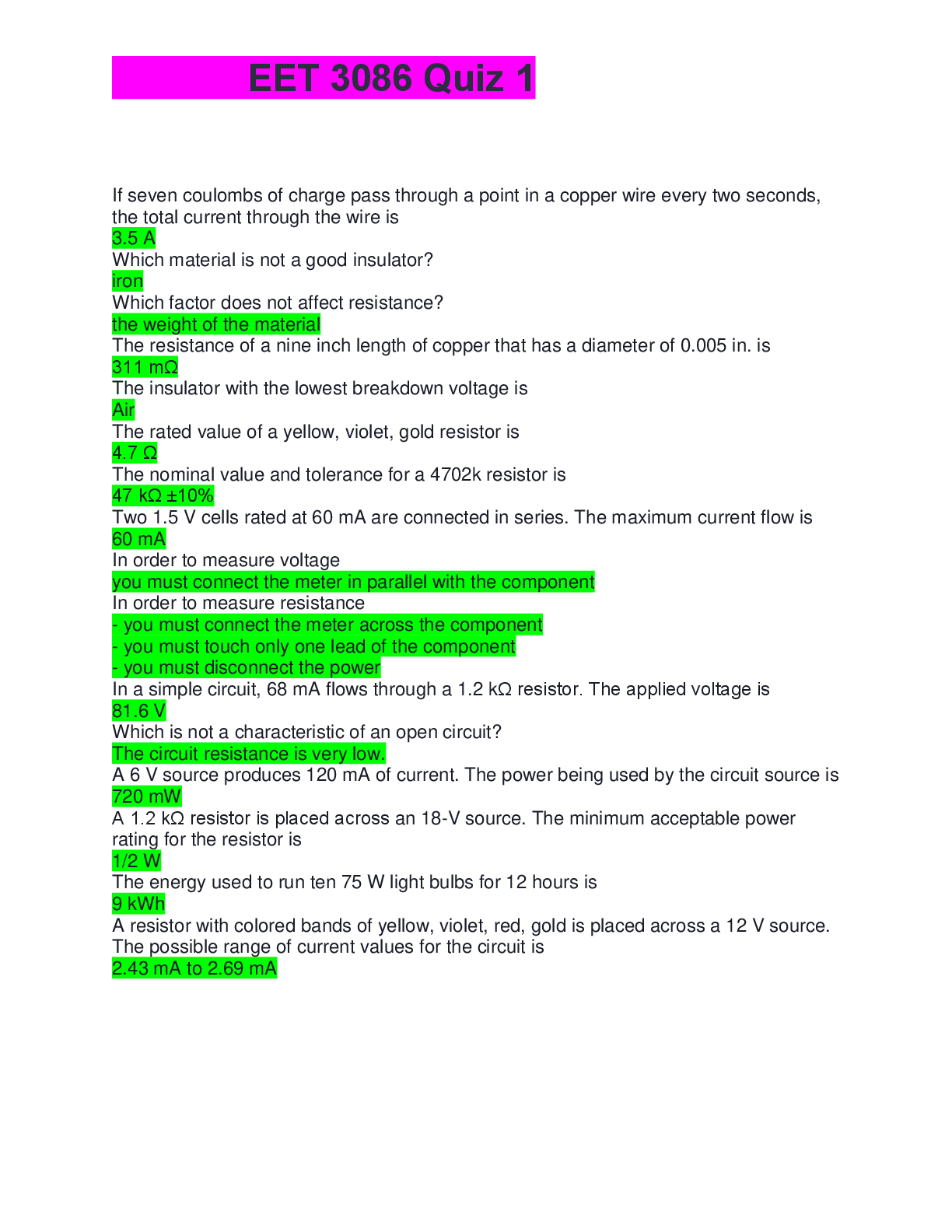NRNP 6566 Week 9 Knowledge Check (Questions and Answers)
Document Content and Description Below
NRNP 6566 Week 9 Knowledge Check (Questions and Answers) NRNP 6566 Week 9 KC • Question 1 A 32 year old preschool teacher complains of difficulty swallowing, sore throat, and chills. She is ... febrile with a temperature of 101.6 along with white patches on her tonsils. Her rapid strep test is positive. Her past medical history is positive for an anaphylactic reaction to cefaclor two years ago. What antibiotic could be safely utilized in this patient? Correct Answer: Streptococcus is usually treated with amoxicillin. Her type 1 anaphylactic re-action to a cephalosporin means you should not use a cephalosporin or peni-cillin. Acceptable alternatives would be macrolide such as azithromycin or clindamycin. • Question 2 A 20-year old woman was seen by her primary care provider last week and diagnosed with a lower track UTI. Her complaints at that time included burning on urination, frequent urination of a small amount, and superpubic pain. She was prescribed a 3 day course of Bactrim which she completed. She is admitted to the step down unit today with complaints of fever (102.6 and above) for the past 24 hours and CVA tenderness. She appears very ill and is somewhat confused today. Her BP is 100/62. Her family indicates that she has been vomiting for the last 24 hours and been unable to keep food or fluids down. What would your initial plan for this patient include? Correct Answer: This patient has classic symptoms of pyelonephritis as well as sepsis. Her high temperature, low blood pressure, vomiting, dehydration, and confusion indicate a need for admission and IV antibiotics. Initial antibiotic options include ceftriazone or ciprofloxin PLUS gentamicin OR ampicillin/ sulbactam. Intravenous fluid administration is also indicated. According to the Surviving Sepsis campaign, an initial bolus of 30 ml/kg over 30-60 minutes should be administered. Urine culture and sensitivity should be sent. Antibiotics should be adjusted based on the results of these tests. • Question 3 A 26 year old male is scheduled for a lumbar laminectomy tomorrow. Penicil-lin causes a rash in this patient. His preoperative orders include cefazolin 2 gm IV to be given on call to the OR. The NP is called to change the antibiotic order due to the patients allergy. What is the best action for the NP to take? Correct Answer: There is a 5-8% cross allergy between pencilling and cephalosporins in pa-tients that are allergic to penicillin. The most current literature indicates that patients with a Type 1 anaphylactic reaction to penicillin should not be given cephlosporins. Since this patient has a rash reaction, proceeding with the cefazolin order would be within the current recommendations. Some facilities still have guidelines in place that would prevent a penicillin allergy patient from getting a cephlosporin. In this instance, the Surgical Care Improvement Pro-ject (SCIP) includes alternate recommendations of Vancomycin 1-2 grams IV 1 hour prior to surgery or Clindamycin 900 mg IV 1 hour prior to surgery. .........Continued [Show More]
Last updated: 3 years ago
Preview 1 out of 5 pages

Buy this document to get the full access instantly
Instant Download Access after purchase
Buy NowInstant download
We Accept:

Also available in bundle (1)
Click Below to Access Bundle(s)
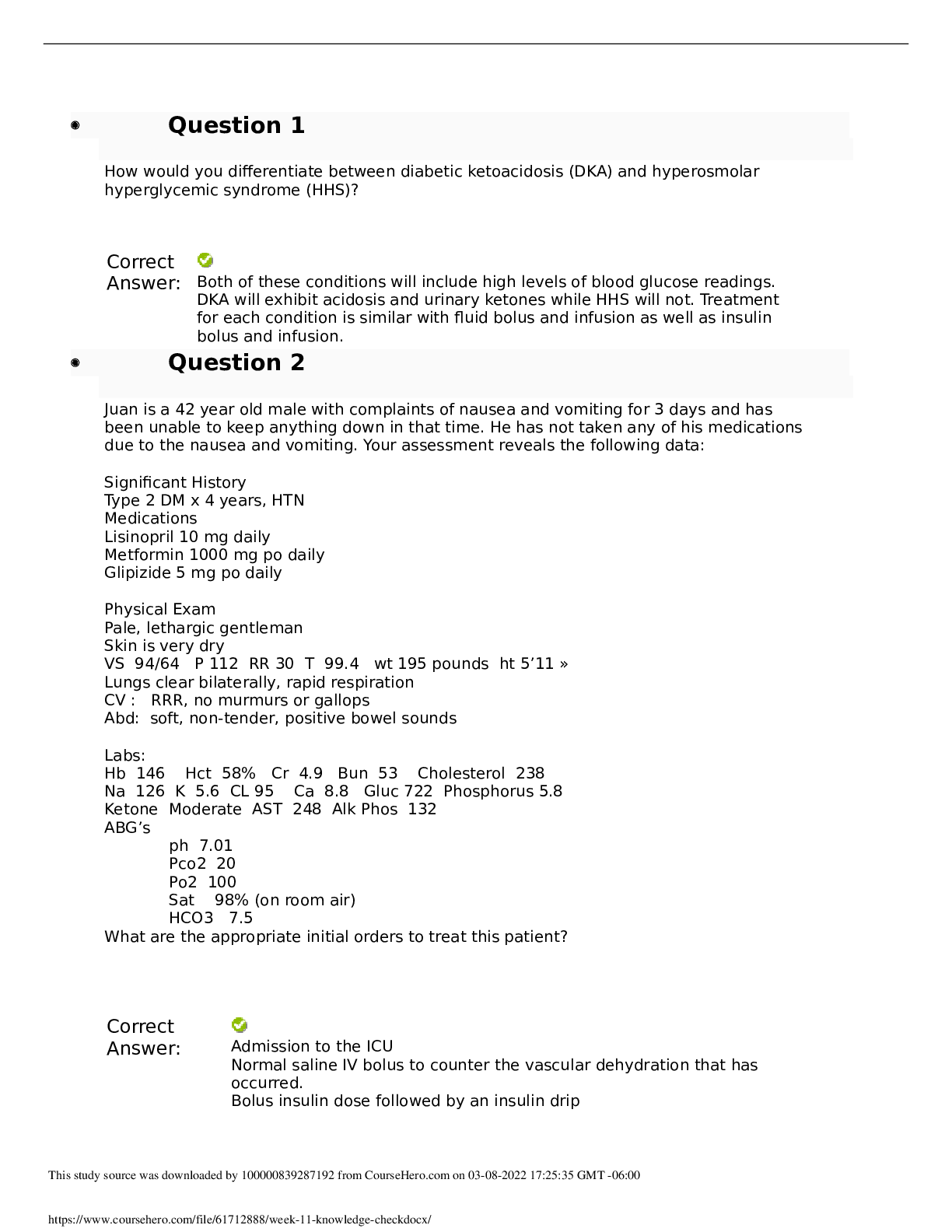
NRNP 6566 Week 3-Week 11 Knowledge Check (Q&A)
NRNP 6566 Week 3-Week 11 Knowledge Check (Q&A) NRNP 6566 Week 3-Week 11 Knowledge Check (Q&A)
By YourTutor 4 years ago
$45.5
8
Reviews( 0 )
$10.50
Can't find what you want? Try our AI powered Search
Document information
Connected school, study & course
About the document
Uploaded On
Feb 08, 2021
Number of pages
5
Written in
All
Additional information
This document has been written for:
Uploaded
Feb 08, 2021
Downloads
0
Views
111












